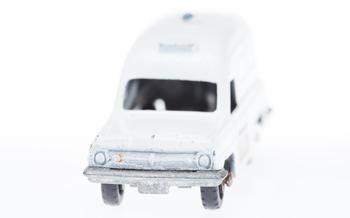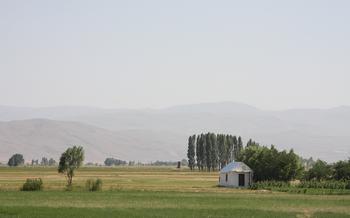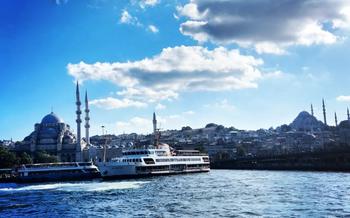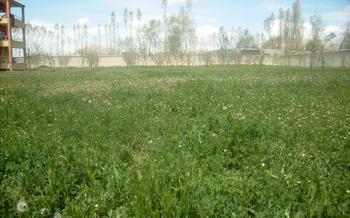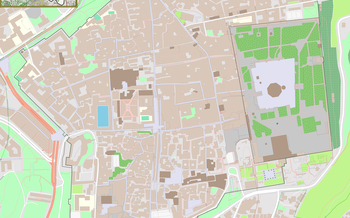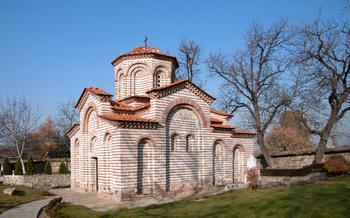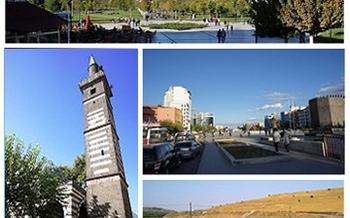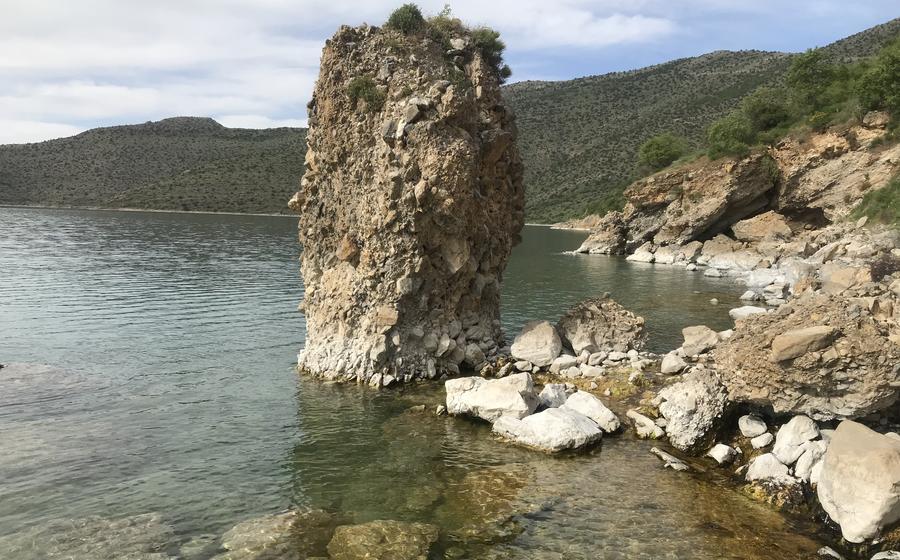
Kırkçavuş Village Church
- Van, Turkey: Unveiling the Charm of Kırkçavuş Village Church
- A Journey Back in Time: Exploring the Church's History
- Architectural Masterpiece: Unveiling the Church's Design
- A Place of Worship and Community: The Church's Significance
- Finding the Kırkçavuş Village Church: A Practical Guide
- Stepping Inside: Unveiling the Church's Interior
- A Symbol of Resilience: The Church's Enduring Legacy
- Exploring the Surrounding Village: Kırkçavuş's Charm
- Photography Tips: Capturing the Church's Beauty
- Preserving the Past: Conservation Efforts at the Church
- Unveiling Hidden Stories: Legends and Folklore
- Cultural Immersion: Experiencing Armenian Traditions
- Ethical Considerations: Respecting Local Customs
- A Journey Through Time: Historical Context of the Region
- Insider Tip: Unveiling Hidden Gems
Van, Turkey: Unveiling the Charm of Kırkçavuş Village Church
Nestled amidst the picturesque landscapes of Van, Turkey, lies the Kırkçavuş Village Church, a captivating testament to the region's rich cultural heritage. This ancient Armenian church, built in the 16th century, stands as a symbol of resilience and devotion, beckoning travelers to embark on a journey through time and spirituality. The church's significant historical and religious value, coupled with its unique architectural features, makes it a must-visit destination for anyone seeking to delve into the heart of Van's cultural legacy.
Practical Information: - Location: The Kırkçavuş Village Church is situated in the village of Kırkçavuş, approximately 15 kilometers from the city center of Van. - Accessibility: The church is easily accessible by car or public transportation. Visitors can take a bus from Van city center to Kırkçavuş village and walk a short distance to reach the church. - Admission: Entrance to the church is free, and visitors are welcome to explore the premises at their own pace.
A Journey Back in Time: Exploring the Church's History
The Kırkçavuş Village Church holds a fascinating history that dates back centuries, adding to its significance and allure. Its origins can be traced to the 13th century, when it was constructed as a place of worship for the Armenian community in the region. The church played a pivotal role in the development of Christianity in the area, serving as a spiritual center for the Armenian faithful. Over the years, it has witnessed numerous historical events and legends, becoming an integral part of the local heritage.
Despite its age, the church has undergone several renovations and restoration efforts to preserve its integrity. These efforts have been crucial in maintaining the church's architectural beauty and ensuring its continued existence as a testament to the region's rich cultural heritage. The church's resilience and ability to endure through various challenges stand as a symbol of the Armenian community's perseverance and faith. Today, it continues to serve as a place of worship and a source of inspiration for visitors seeking to delve into the region's history and spirituality.
Architectural Masterpiece: Unveiling the Church's Design
The Kırkçavuş Village Church stands as a testament to the architectural prowess of its builders. Its distinctive design incorporates elements of Armenian and Byzantine architecture, creating a unique blend that sets it apart from other churches in the region. The church's exterior is adorned with intricate carvings and sculptures, depicting biblical scenes and figures. The interior features a spacious nave, supported by massive columns and arches. The walls are adorned with vibrant frescoes, depicting stories from the Bible and the lives of saints. The altar is the focal point of the church, elaborately decorated with gold leaf and precious stones. The overall design of the church exudes a sense of grandeur and spirituality, reflecting the importance of this sacred space for the local Armenian community.
The church's construction utilized local materials, such as volcanic stone and timber, showcasing the region's natural resources. Traditional construction techniques were employed, ensuring the church's longevity and resilience against the elements. The use of local materials and traditional methods adds to the church's authenticity and connection to its surroundings.
Symbolism and hidden meanings are woven into the church's design elements. The number forty, represented by "kırk" in Turkish, holds significance in Armenian culture, symbolizing completeness and perfection. The church's name, Kırkçavuş, translates to "forty soldiers," possibly referring to the forty martyrs who were said to have been buried on the site. The intricate carvings and frescoes depict scenes from the Bible, serving as visual reminders of the church's religious purpose and the stories that have shaped the Armenian faith.
Comparing the Kırkçavuş Village Church with other Armenian churches in the region reveals both similarities and unique characteristics. While sharing common architectural elements, such as the use of stone and the cruciform layout, the Kırkçavuş church stands out for its elaborate carvings, vibrant frescoes, and the integration of local materials and traditional construction techniques. Its distinctive design reflects the cultural heritage and artistic traditions of the Armenian community in Van.
A Place of Worship and Community: The Church's Significance
The Kırkçavuş Village Church holds immense significance for the local Armenian community, serving as a spiritual center and a place of worship. It is a place where the community gathers for religious rituals, ceremonies, and events. The church provides a sense of belonging and unity, fostering social interaction and strengthening community bonds.
Beyond its religious significance, the church plays a crucial role in preserving Armenian cultural heritage. It houses valuable artifacts, such as ancient manuscripts, icons, and artwork, which showcase the rich artistic traditions of the Armenian people. The church's architecture, with its unique blend of Armenian and local influences, reflects the cultural diversity of the region.
Moreover, the church serves as a symbol of Armenian identity and continuity. Despite facing historical challenges and persecution, the church has endured and remains a testament to the resilience of the Armenian people. It is a place where the community can come together to celebrate their heritage, share their traditions, and pass on their culture to future generations.
Finding the Kırkçavuş Village Church: A Practical Guide
Reaching the Kırkçavuş Village Church from Van city center is a straightforward journey. Embark on a scenic drive that takes approximately 1 hour and 30 minutes, covering a distance of around 70 kilometers. As you navigate the winding roads, admire the picturesque landscapes that unfold before you.
For those relying on public transportation, there are regular bus services departing from Van's main bus terminal. These buses provide a convenient and affordable option, ensuring a hassle-free journey to the village. Alternatively, you can opt for a more personalized experience by hiring a private tour operator. These services often offer guided tours that delve into the church's history and significance, providing valuable insights along the way.
To fully appreciate the church's beauty and avoid the summer crowds, plan your visit during the shoulder seasons of spring or autumn. These periods offer pleasant weather conditions, ideal for exploring the church's exterior and interior. However, the church remains open throughout the year, welcoming visitors to experience its timeless allure regardless of the season.
For further inquiries or to obtain additional information, contact the local tourism office or refer to reputable online resources. These platforms provide up-to-date information on opening hours, admission fees, and any special events or exhibitions held at the church.
Stepping Inside: Unveiling the Church's Interior
The interior of the Kırkçavuş Village Church is a testament to the artistry and devotion of its builders. The layout is simple yet elegant, with a central nave and two side aisles separated by rows of columns. The walls are adorned with intricate frescoes depicting biblical scenes and the lives of saints. The most striking feature of the interior is the altar, which is elaborately carved with religious iconography. The altar is also home to a number of valuable relics, including a fragment of the True Cross.
The church's interior is a place of peace and tranquility. The soft light filtering through the stained glass windows creates a mystical atmosphere that invites contemplation and prayer. Visitors are often struck by the sense of history that permeates the interior. It is easy to imagine the generations of Armenians who have worshipped in this church over the centuries.
The Kırkçavuş Village Church is a living testament to the faith and resilience of the Armenian people. Its interior is a treasure trove of art and history, and it is a place that will stay with visitors long after they have left.
A Symbol of Resilience: The Church's Enduring Legacy
The Kırkçavuş Village Church has stood as a symbol of resilience amidst the tumultuous political and historical events that have swept through the region. Despite facing challenges, including wars, persecution, and natural disasters, the church has remained a testament to the enduring spirit of the Armenian community. Its survival serves as a reminder of the importance of preserving cultural heritage and maintaining a connection to the past. The church has become a beacon of hope and a source of strength for the Armenian community, representing their resilience and their determination to maintain their identity and cultural traditions. Efforts are continuously made to preserve and promote the church's legacy, ensuring that it remains a symbol of resilience and a source of inspiration for future generations.
Exploring the Surrounding Village: Kırkçavuş's Charm
Nestled amidst the tranquil landscapes of Kırkçavuş village, visitors can immerse themselves in the vibrant local culture and traditions. The village exudes a sense of authenticity, offering a glimpse into the daily life of its hospitable residents. Engage in meaningful interactions with the villagers, who are eager to share their stories and showcase their unique customs.
Explore the village's narrow cobblestone streets, lined with charming houses adorned with intricate carvings and colorful murals. Discover local artisans creating exquisite handicrafts, such as handwoven carpets, intricate pottery, and delicate embroidery. These handcrafted treasures offer a tangible connection to the village's rich artistic heritage.
Indulge in the village's delectable cuisine, which blends traditional Armenian flavors with fresh local ingredients. Savor the aromatic dishes prepared with love and care, using recipes passed down through generations. From hearty stews to freshly baked pastries, the culinary delights of Kırkçavuş are sure to tantalize your taste buds.
Venture beyond the village center to explore the surrounding countryside, where breathtaking vistas await. Rolling hills, lush vineyards, and picturesque orchards create a tapestry of colors and textures. Discover hidden trails that lead to secluded spots, ideal for a tranquil picnic or a moment of peaceful contemplation.
Whether you seek cultural immersion, culinary adventures, or simply the chance to connect with nature, Kırkçavuş village offers a wealth of experiences that will enrich your journey to the Kırkçavuş Village Church. Embrace the warmth and hospitality of the locals, and leave with a deeper understanding of the vibrant Armenian heritage that thrives in this charming village.
Photography Tips: Capturing the Church's Beauty
The Kırkçavuş Village Church offers a wealth of photographic opportunities, inviting travelers to capture the essence of its architectural splendor and intricate details. To make the most of your photography experience, consider the following tips:
Camera Settings and Techniques: Opt for a wide-angle lens to capture the church's expansive facade and sweeping interiors. Utilize a tripod for stability, especially when shooting in low-light conditions. Experiment with different shutter speeds and apertures to achieve the desired depth of field and motion blur effects.
Finding the Best Angles: Explore various angles to showcase the church's unique features. Photograph from a low perspective to emphasize its towering grandeur, or climb to a higher vantage point to capture the surrounding landscape. Experiment with different compositions to create dynamic and visually appealing images.
Lighting Conditions: The golden hours of sunrise and sunset offer the most flattering light for photography. Plan your visit accordingly to capture the church bathed in warm, ethereal light. Avoid harsh midday sun, which can create harsh shadows and overexposed highlights.
Respecting the Sanctity: Remember that the church is an active place of worship. Be respectful of ongoing religious ceremonies and avoid using flash photography, which can be disruptive. Ask permission before photographing people or private areas, and always maintain a quiet and considerate demeanor.
Sharing Your Photography: Share your stunning captures of the Kırkçavuş Village Church with the world! Inspire others to visit this architectural gem through your captivating images. Tag your photos on social media using relevant hashtags, and consider creating a blog or online gallery to showcase your work.
Preserving the Past: Conservation Efforts at the Church
The Kırkçavuş Village Church stands as a testament to the enduring spirit of the Armenian community and the importance of preserving historical landmarks. Ongoing restoration and conservation projects aim to maintain the church's integrity and ensure its survival for future generations.
The challenges of preserving a historical landmark in a changing environment are significant. The church has faced the effects of time, weather, and natural disasters, requiring careful restoration work to address structural issues and preserve its architectural details. Skilled craftsmen and artisans collaborate to restore the church's original features, using traditional techniques and materials to maintain its authenticity.
Raising awareness and support for conservation efforts is crucial. Visitors can contribute to the preservation of the church by respecting its sanctity, adhering to guidelines, and making donations or supporting organizations dedicated to its upkeep. By preserving the Kırkçavuş Village Church, we not only safeguard a piece of history but also honor the cultural heritage of the Armenian community and ensure its legacy continues to inspire generations to come.
Unveiling Hidden Stories: Legends and Folklore
The Kırkçavuş Village Church is not only a testament to architectural brilliance but also a treasure trove of local legends and folklore. These stories, passed down through generations, have woven a rich tapestry of myth and mystery around the church.
One captivating legend tells of a hidden chamber beneath the church, believed to contain ancient treasures guarded by a fierce dragon. Locals whisper tales of brave adventurers who dared to venture into the chamber, only to be met with the dragon's fiery breath.
Another legend speaks of a miraculous spring that once flowed near the church, said to possess healing powers. It is believed that the spring's waters could cure all ailments, and pilgrims from distant lands would flock to the church seeking its healing touch.
The surrounding natural landscape also plays a role in the church's folklore. The towering mountains that embrace the village are said to be the resting place of ancient spirits, who watch over the church and its people.
These legends and stories add a layer of enchantment to the Kırkçavuş Village Church, inviting visitors to explore not just its physical beauty but also its rich cultural heritage. They remind us of the power of storytelling in preserving traditions and connecting us to the past.
Cultural Immersion: Experiencing Armenian Traditions
The Kırkçavuş Village Church offers a unique opportunity for visitors to immerse themselves in Armenian culture and traditions. The village is a vibrant center of Armenian heritage, and there are many ways for visitors to experience it firsthand.
One of the best ways to experience Armenian culture is through its cuisine. The village is home to several traditional Armenian restaurants, where visitors can sample delicious dishes such as dolma, kufta, and lahmacun. Visitors can also take cooking classes to learn how to prepare these dishes themselves.
Another way to experience Armenian culture is through its music and dance. The village is home to a number of talented musicians and dancers, who often perform at local festivals and events. Visitors can also take classes to learn how to play traditional Armenian instruments or dance the traditional Armenian dances.
Finally, visitors can also experience Armenian culture through its crafts. The village is home to a number of skilled artisans, who create beautiful carpets, pottery, and jewelry. Visitors can purchase these items as souvenirs, or they can take classes to learn how to make them themselves.
By immersing themselves in Armenian culture, visitors to the Kırkçavuş Village Church can gain a deeper understanding of the Armenian people and their rich heritage.
Ethical Considerations: Respecting Local Customs
When visiting the Kırkçavuş Village Church and the surrounding village, it is essential to be mindful of local customs and traditions to ensure a respectful and enjoyable experience for all. Here are some guidelines to follow:
-
Dress Code: When entering the church, visitors should dress modestly and appropriately. Avoid shorts, tank tops, or revealing clothing, as these may be considered disrespectful in religious settings.
-
Photography Etiquette: Before taking photographs of people, especially during religious ceremonies or events, it is polite to ask for permission first. Respect the privacy of individuals and avoid taking intrusive or disrespectful photos.
-
Supporting the Community: When visiting the village, support local businesses by purchasing souvenirs, handicrafts, or food from local vendors. This helps sustain the local economy and contributes to the well-being of the community.
-
Be Culturally Sensitive: Be open-minded and respectful of the local culture. Avoid making insensitive comments or engaging in behavior that may be perceived as offensive or disrespectful.
By following these guidelines, visitors can contribute to a positive and enriching experience for themselves and the local community, fostering mutual understanding and appreciation.
A Journey Through Time: Historical Context of the Region
The Kırkçavuş Village Church is not only a testament to Armenian architectural prowess but also a living witness to the rich historical tapestry of Van and its surrounding region. Van has been a cultural crossroads for centuries, with various civilizations leaving their mark on its landscape and heritage. The Armenian presence in the area dates back to ancient times, and their contributions to the region's cultural fabric are undeniable. From the establishment of the Armenian Kingdom of Vaspurakan in the 9th century to the vibrant Armenian communities that flourished in the region until the early 20th century, Van has been an integral part of Armenian history.
Major historical events have shaped the region's past, leaving an imprint on its cultural and architectural landscape. The Battle of Manzikert in 1071, which resulted in the Seljuk victory over the Byzantine Empire, marked a significant turning point in the region's history. The Armenian Genocide of 1915, a dark chapter in human history, had a devastating impact on the Armenian communities of Van, leading to their forced displacement and the destruction of their cultural heritage.
Understanding the historical context of Van and the surrounding region is essential for appreciating the significance of the Kırkçavuş Village Church. It provides a deeper understanding of the Armenian presence in the area, their contributions to its cultural heritage, and the challenges they faced throughout history. This historical context adds another layer of meaning to the church, making it not just an architectural marvel but a symbol of resilience and cultural continuity.
Insider Tip: Unveiling Hidden Gems
Beyond the captivating allure of the Kırkçavuş Village Church, the surrounding region holds a treasure trove of hidden gems waiting to be discovered. For those seeking an authentic glimpse into the local culture, venturing off the beaten path will lead to enchanting encounters. Explore the village's narrow cobblestone streets, where traditional Armenian houses adorned with intricate carvings tell stories of a bygone era. Engage with the friendly locals, who are always eager to share their heritage and traditions. Savor the flavors of Armenian cuisine at family-run restaurants, where the aromas of freshly baked lavash bread and mouthwatering dolma fill the air.
Discover the hidden natural wonders that surround the church. Embark on a scenic hike through the lush forests, where towering trees create a symphony of rustling leaves. Marvel at the cascading waterfalls that plunge into crystal-clear pools, inviting you to take a refreshing dip. Unearth ancient rock formations that whisper tales of a time when the earth was young. Whether it's exploring hidden chapels nestled among the hills or discovering secret viewpoints that offer breathtaking panoramas, there's always something new to uncover in this enchanting region.
